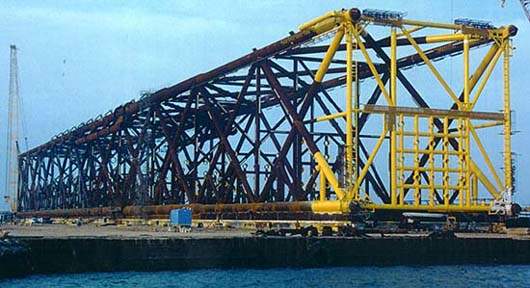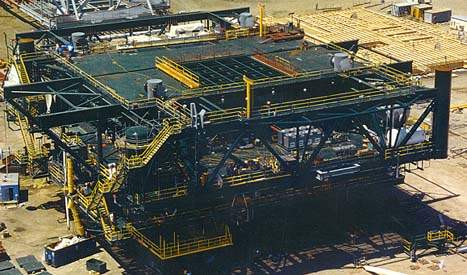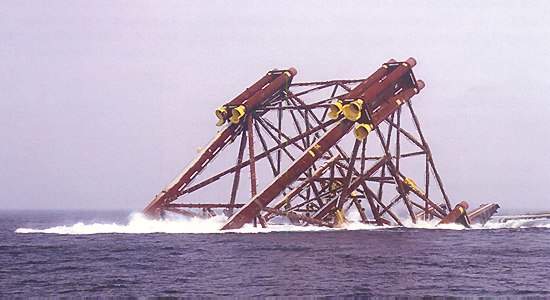Baldpate is located in 1,650ft of water, in Garden Banks (GB) block 260, 120 miles off the Louisiana coast. This is the first free-standing offshore compliant tower ever, as well as one of the tallest free-standing structures in the world. The tip of the flare boom extends 1,902ft above the seafloor.
Discovery
The discovery well was drilled by the semisubmersible Ocean Rover in late 1991, revealing 180ft of net pay.
Production
Total output from seven planned production wells will exceed 50,000 barrels per day (b/d) and 150,000 million standard cubic feet per day (MMSCFD).
Anticipated recoverable reserves from Baldpate and Baldpate North total 104 million barrels of oil equivalent (Mmboe), with 60% being oil and the remainder being gas.
Production from the platform reached its peak in the first half of 1999, at rates approaching facility oil and gas capacities.
Drilling and completion
Due to the high pressures associated with the main Baldpate reservoirs, surface producing and shut-in pressures are well above 10,000psi, necessitating 15,000psi working-pressure wellhead equipment.
Jacket
The GB 260 platform consists of a compliant tower, configured with axial tubes (two at each of the four legs of the tower section) and an articulation point that governs the dynamic characteristics of the structure.
Being ‘compliant’, the tower is designed to be more flexible than conventional platforms and has a sway-response cycle, if subjected to a storm wave, of approximately 30 seconds. Such a long period makes the tower less sensitive to storm wave forces and it can move up to 10ft laterally during storms.
The Baldpate-compliant tower structure was constructed in several pieces. It was engineered and designed by McDermott Engineering of Houston. The jacket-base section, constructed by J Ray McDermott, is 351ft-tall and 140ft x 140ft at the base, tapering to a 90ft x 90ft cross-section (the equivalent of the tower section) at the top.
The base weighs 8,700t and its largest structural members (the legs) have diameters up to 144in and wall thicknesses up to 3.5in / 8in. Attached to the base at each of the bottom four corners are three 84in-diameter, 530ft skirt-pile sleeves, also fabricated by McDermott. These were driven through twelve sleeves into the seafloor, with penetrations approaching 430ft.
The jacket-tower section, constructed by Aker Gulf Marine, is 1320ft-tall and has large pins at the bottom of each of the four legs, to mate with receptacles built into the top of the jacket-base section.
The tower section is 90ft x 90ft in cross section, weighs 20,200t and its largest structural members (the legs) have diameters up to 128in and wall thicknesses up to 3.3in/4in.
Topsides
The GB 260 topsides are comprised of a three-level deck structure, weighing 2,400t without the equipment. Incorporated into the topsides is the process and utility equipment and accommodation for up to 28 operating personnel.
Heerema Offshore installed the GB 260 platform. The base section was transported to location and launched from the Intermac 650 barge, where it was positioned by the Balder cranebarge over two docking piles.
Once the base was in place, Heerema installed the 12 foundation piles.
Pipeline
The 12in gas line is comprised of 13.2 miles of 0.5in and 0.625in-wall API Grade-B pipe, provided by Sumitomo, coated with fusion bond epoxy (FBE). The GB 260 end of the gasline is attached to the tower with a steel catenary riser (SCR).
The 16in oil pipeline is comprised of 17 miles of 0.625in and 0.75in-wall API Grade B pipe, both FBE coated and protected with anodes.
There is a 16in SCR at GB 260 for the oil line, much like that for the gasline, which is neoprene coated and outfitted with strakes. The other end the oil line ties into Mobil’s SMI 205 A platform.









